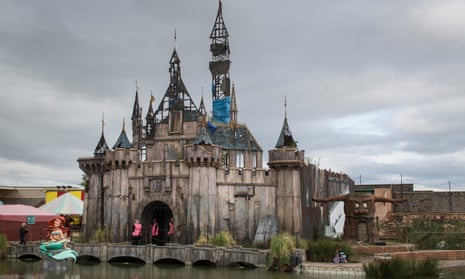The science of branding has always revolved around telling stories to sell a service or product. Today, however, the experience around these stories, to draw customers even closer, is becoming more important, whether online, on the high street or at a brand event.
As more and more businesses look for new ways to entice customers, here are some thoughts about what makes these experiences work.
Elevate every detail
Disneyland was the original visitor experience and is perhaps still the best. Walt Disney was the master of engaging customers, telling magical stories and introducing all-singing, all-dancing staff, not to mention the three o’clock parade that brought the world of Mickey Mouse to life.
Focusing on and elevating every detail, from talking trees to the interactive characters along Main Street, is why the theme park attracted 16.7 million visitors in 2014. Today, the brand is making technology a seamless part of the visitor experience, which is stronger for it.
Its MagicBand system allows for a more carefree visit to another of its experiences, Walt Disney World. The band takes care of long queues, allocates seats at particular shows and makes eating out fuss-free. It also unlocks “special surprises” dotted around the resort, personalised for the user. All this goes some way to making a visit to the resort worth its premium charge, because Disney has optimised every second of your time, delivering more delight per minute.
But elevating the ordinary in a visitor experience isn’t only for fairytale settings. While Disney worked hard to eliminate experience-dampening frustrations, Banksy’s Dismaland worked hard to create the ultimate depressing day out.
The parody park packaged itself as a family day out, yet unsuitable for children, and an interactive art exhibition, yet intent on being as unremarkable as possible. With long queues at the front gate (and at every onward point) and deliberately grumpy and irritable staff, Banksy’s dystopia proved that even dismal experiences can be alluring if you pay attention to the small stuff.
The experience drew 150,000 visitors in six short weeks, giving Weston-super-Mare a £20m economic boost.
Immersion in legends
Events are naturally more arresting when you’re a part of them, not merely a spectator. By their very nature, immersive experiences can make even the most mysterious of brands deeply understood. It’s something we at StartJG are working on in the All Blacks Experience, to launch in Auckland, New Zealand in 2017.
The jet black jerseys, the faultless team spirit and, of course, the haka have turned the All Blacks into rugby’s most famous brand. But it’s what makes them different to other sports teams that we want to address in this brand experience.
Seasoned brand managers know that immersion has more impact than external promotions, which is why the experience is being built using the science of emotional sensory design. Basically, we want to make people feel. Tourists and fans will be able to experience Maori culture and its connection with the team’s passionate belief system, to locker-room rituals and the feeling of facing the team on the pitch. They’ll even get the chance to test their skill against the players.
Embedded in heritage, this will be an access-all-areas experience that makes visitors happy, sad, inspired, scared and more. It will hopefully enrich them and connect them directly to New Zealand’s rugby culture.
Conquer through curiosity
People are fascinated by oddities. It’s this insight that drove Heineken to “litter” the streets of Amsterdam with strategically placed, GPS-enabled beer bottles, each cleverly containing a compass to take curious minds straight to the Heineken Experience. It worked; the curiosity test helped clinch 730,000 customers in 2014 alone.
Based on the premise that handing out flyers doesn’t always capture people’s curiosity, the ploy also communicated the inventive nature of the brand. The event has had a strong impact in reshaping how Heineken is perceived: no longer just a beer, but playful and entertaining.
To make a real difference, brands must go much further than simply advertising. Exposing the deeper truths of a brand and allowing people to touch, feel and interact with them, can attract new advocates and customers.
David Judge is executive creative director at StartJG
To get weekly news analysis, job alerts and event notifications direct to your inbox, sign up free for Media Network membership.
All Guardian Media Network content is editorially independent except for pieces labelled “Advertisement feature” – find out more here.

Comments (…)
Sign in or create your Guardian account to join the discussion